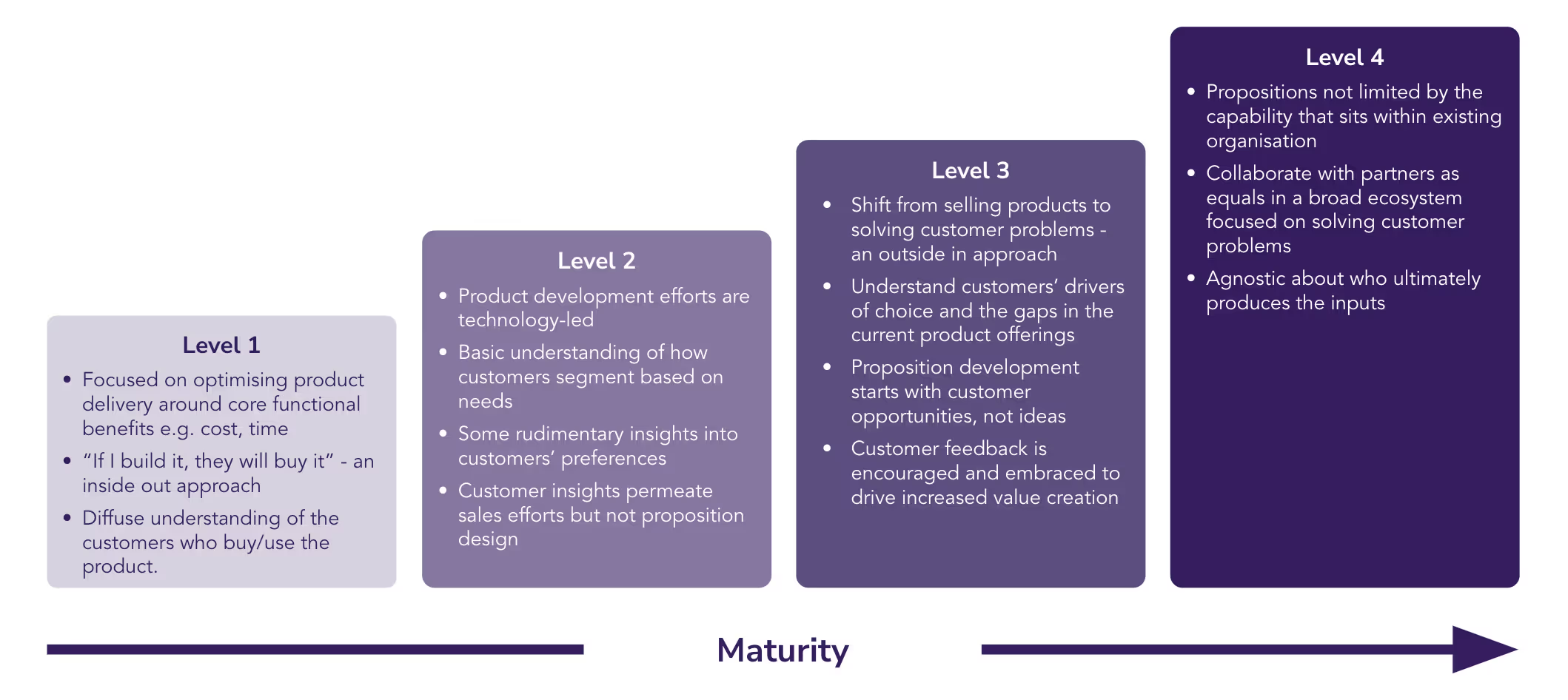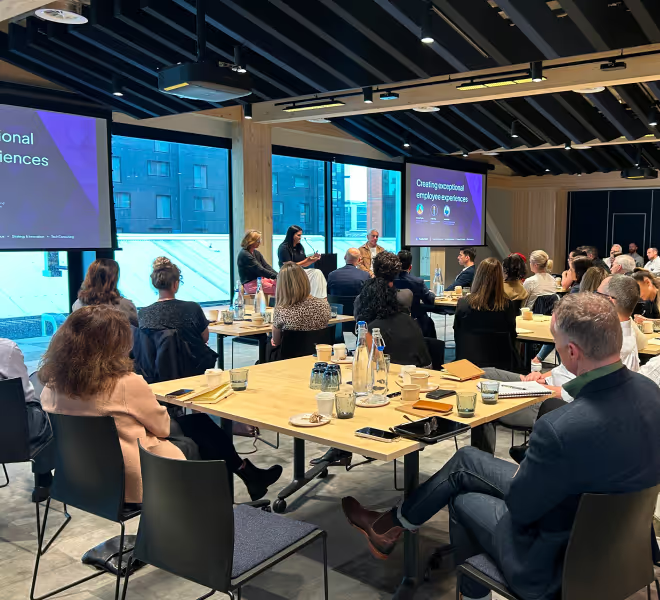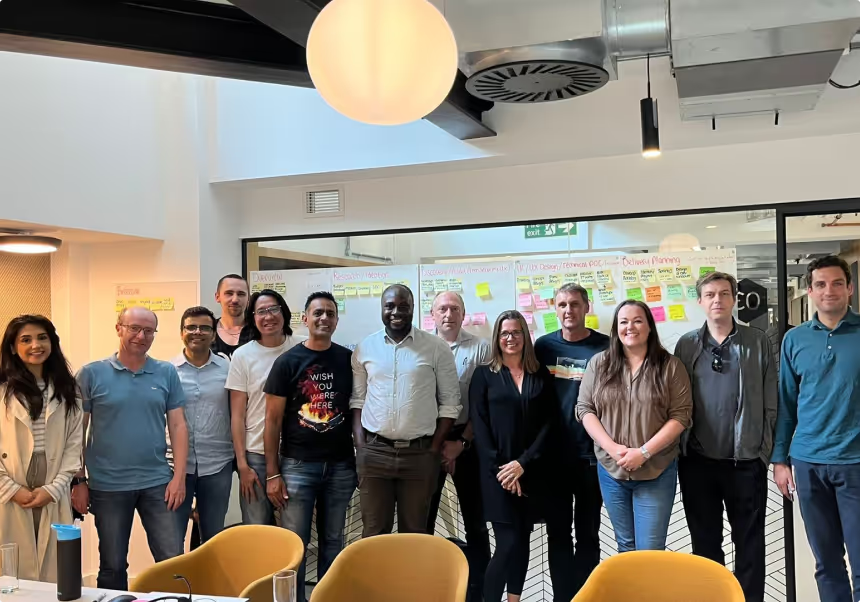In today's competitive market, the concept of customer centricity is more than a buzzword - it's a strategic necessity. But what does it really mean to be customer-centric, and more importantly, how does your organisation measure up? The Customer Centricity Maturity Model that we’ve borrowed from Harvard Business School offers a clear framework to help businesses assess and enhance their focus on customer needs.
Achieving higher levels of customer centricity isn't just beneficial—it's crucial for staying relevant and competitive. As Jeff Bezos of Amazon famously said “We’re customer obsessed. We start with what customers need and we work backwards”. Organisations that understand what drives customer choice and where they can preferentially create customer value will be better placed to adapt to the needs and problems of their customers eventually leveraging customer centricity to establish a powerful source of competitive advantage.
Understanding the Customer Centricity Maturity Model
The model categorises organisational practices into four progressive levels, each representing a distinct approach to customer centricity:

Level 1: Product-centric
At this foundational level, companies operate with the mantra "If I build it, they will buy it." The focus is squarely on optimising product delivery based on core functional benefits like cost and time, with a diffuse understanding of the customers who buy or use the product.
Level 2: Emerging customer orientation
Progressing to level two, organisations start to integrate basic customer insights primarily into their sales efforts. Although product development is still led by technology, there's an emerging recognition of customer segmentation based on needs.
Level 3: Customer-problem solving
This level marks a significant shift from selling products to solving customer problems, adopting an outside-in approach. Companies actively seek to understand what drives customer choices and where current products fall short, using customer feedback to drive meaningful changes.
Level 4: Customer-centric ecosystem
The pinnacle of customer centricity is reached when companies no longer confine themselves to internal capabilities but instead collaborate broadly to solve customer problems. At this stage, the focus is on creating value through an ecosystem of partners, agnostic of who produces the inputs.
Self-Assessment: Assessing customer centricity in your organisation
To determine where your organisation stands, consider the following questions:
- Do your business strategies prioritise customer needs or are they more focused on product features?
- Does customer knowledge get used to open up whole new areas of customer value creation beyond your current products/services?
- Do you understand what drives customer choice - what causes your customers to choose your product or service over the competing alternatives?
- Is your organisation’s effort focussed on enhancing customer outcomes or merely selling more of what you make today?
- How do customer insights influence your business decisions and product/service development?
- To what degree do you define your business based on the customer value you create versus the products and services that you sell?
Reflect on your answers to gauge your current level of customer centricity.
Moving up the curve
Progressing through the levels of the Customer Centricity Maturity Model involves a significant change in both organisational culture and mindset. Begin by enhancing your understanding of your customers' drivers of choice and uncovering opportunities to create and capture new value. Utilise these insights to refine your strategies and product offerings, ensuring they resonate with the preferences and decision-making processes of your customers. This knowledge should be embedded across all aspects of your business, from product development to customer experience design and delivery, creating a unified approach to customer engagement. Additionally, seek out collaborations that break traditional boundaries, partnering with others to develop solutions that are truly customer driven. By advancing in this way, you not only bolster your competitive edge but also deepen connections with customers, resulting in sustainable growth.
In summary
The journey toward true customer centricity is ongoing and dynamic. Each level of the Customer Centricity Maturity Model offers unique challenges and opportunities for growth. By understanding and applying this model, your organisation can begin to make more informed decisions that prioritise customer needs and drive sustainable advantage.
If you’d like to talk about customer centricity and how to accelerate your maturity journey, reach out and we’ll set up a time to share our insights and approaches.






